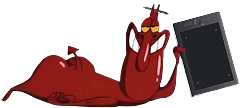

 With release of Autodesk 2012 software line ( Autodesk Maya 2012, Autodesk 3ds Max 2012, Autodesk Softimage 2012 ) also become available integrated into them and updated to version 3.9 mental ray renderer. What's new features can offer this new version of well-known mental images product?..
With release of Autodesk 2012 software line ( Autodesk Maya 2012, Autodesk 3ds Max 2012, Autodesk Softimage 2012 ) also become available integrated into them and updated to version 3.9 mental ray renderer. What's new features can offer this new version of well-known mental images product?..